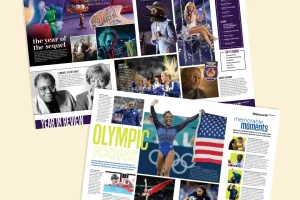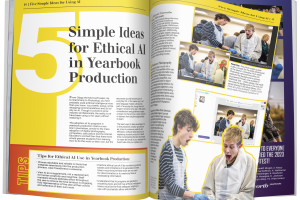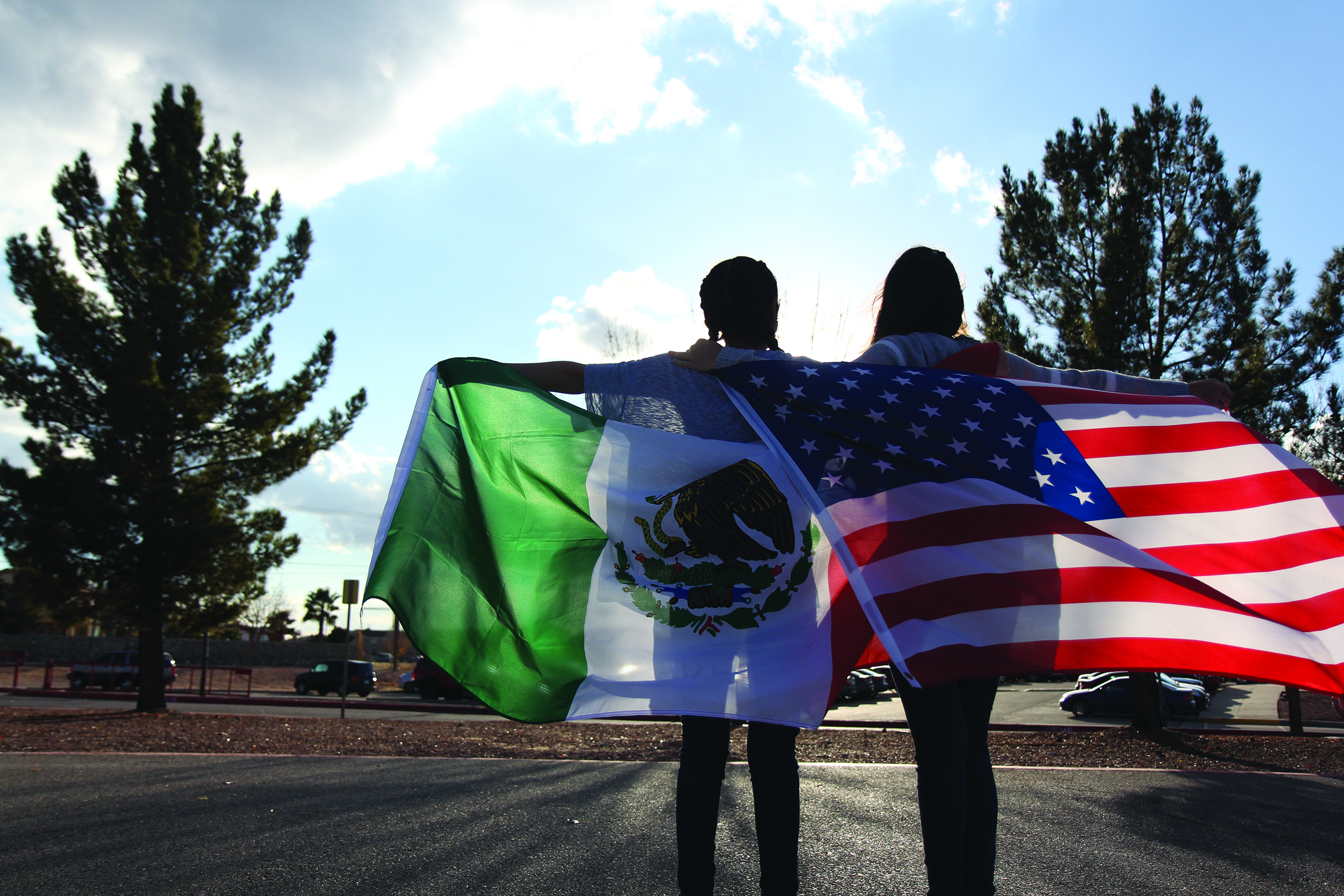
Multicultural coverage in yearbooks
Yearbook staffs work tirelessly to promote yearbooks as something as natural to the American high school experience as the events they record. But for those of multicultural backgrounds, yearbooks may be unfamiliar. Three schools from different communities had one important factor in common: a large demographic whose first language was not English. El Dorado, Santa Maria and Lexington high schools decided that if their communities spoke another language, maybe their yearbook should too.
Exploring Heritage
To understand why these schools decided to address multicultural coverage in their yearbooks, you have to understand the community.
“Our school is over 80% Hispanic,” Lexington High School adviser Erica Brockmoller said of her Nebraska school. “A lot of students are first- and second-generation. We also have refugees in our community.”
Santa Maria High School adviser Tina van den Heever recognized similarities in Santa Maria, California, noting it is a rural area with a lot of immigrants and about a 96% Latino school population. Because it’s not as much a part of Latino culture, yearbook sales lagged compared to other schools in her district.
It comes as little surprise El Dorado High School in El Paso, Texas, has a large Hispanic population as it is located on the border of Mexico. Adviser Vanessa Martinez says America came to them.
“We like to say, ‘We didn’t cross the border – the border crossed us,’” Martinez said. “Our families, we’ve been on the frontera. We were Tejanos. We have that Mexican-American heritage. And a lot of families, before they were even American, were Mexican because of who was in charge in that time… It makes a lot of sense for us to tap into that because we do have a large Hispanic population.”
Having the population carries additional responsibility.
“Parents who may be from Mexico and are first-generation American, they don’t always understand the importance of the yearbook because that’s a uniquely American thing,” Martinez said.
El Dorado High School – El Paso, Texas
Martinez says the decision to include Spanish in their yearbook was a natural, organic decision.
“It’s always been this seamless integration of being proud of your Mexican ancestry and also very proud to be American – it doesn’t feel weird, confrontational or controversial to my students.”
She and her staff integrated snippets of Spanish – a quote, word or headline might be in Spanish. They marketed in Spanish to parents, but their motivation was never to use Spanish as a marketing strategy.
“We never even thought about it as we’re trying to grab these Spanish-speaking kids to market to them to make them feel comfortable,” Martinez said. “It was really just about authenticity. If it was authentic to include that quote, that secondary coverage or that headline in Spanish, then we did it.”
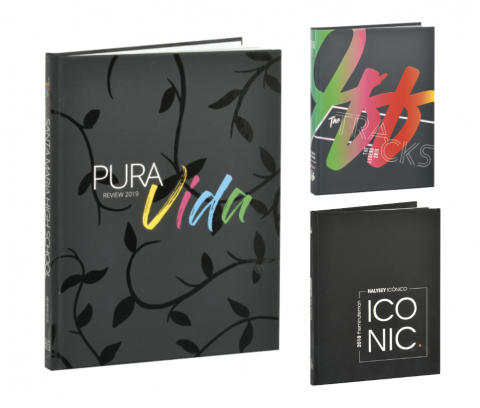
It started when a question was posed for a yearbook quote. The question was asked in English and the girl spoke English, but she chose to respond in Spanish.
“My kids were like, ‘Are we allowed to put it in Spanish, or do we translate?’ I’m like, ‘Why not leave it in Spanish? If the student responded to you using that specific language, then let’s keep it like that,’” she said. “If [judges] don’t [understand], then for sure my school population will. That’s what matters.”
It was important to them not to exclude non-Spanish speakers. She made a point to make sure the Spanish could be pieced together based on contextual clues. No stories were entirely in Spanish, but they did have secondary coverage in “Spanglish.”
“We had a student tell us his experience of waiting on the border and he told us in Spanglish, which is a very common way for people to talk,” Martinez said. “So we printed it exactly the way he told it, and it was really cool. The kids loved it!”
Plenty of topics seemed to be a fit to add Spanish because they were based in Mexican culture, such as ballet folklórico and mariachi teams, as well as activities students participated in that required them to cross the border sometimes daily, like Tae-kwon-do class in Juárez, Mexico, or visiting family.
“I don’t even know why we haven’t done it sooner, because it’s such a normal part of everyday life – speaking in Spanish and then English and then Spanglish,” Martinez said.
Santa Maria High School – Santa Maria, California
For Van Den Heever and her editor, junior Brenda Ballesteros Cendejas, including Spanish was about including their students. Van Den Heever said previous books had not made the same effort to make sure all students were well represented.
“We just covered homecoming, prom, clubs and sports,” Van Den Heever said. “It’s been a pretty standard American yearbook until this year.”
The idea sparked on a trip to Costa Rica, initially only for bilingual headlines. As the idea evolved, they decided they were ready for a bigger challenge – creating the entire book in English and Spanish.
“We realized some of our students who aren’t really involved are more of the Spanish speakers, and we wanted to include them more,” Ballesteros Cendejas said. “I think it helps them connect more to the school and it helps them think, ‘Yeah, I am part of this school and I am connected.’”
Despite enthusiasm, Van Den Heever admitted it’s a gamble, but it seemed like a gamble worth taking.
“I had two [ballet folklórico] girls come in yesterday to sell me tickets to their event,” Van Den Heever said. “I was telling them, ‘Oh, you’ve got to see the front page of our yearbook because we put a ballet folklórico picture on our title page.’… Both of them were like, ‘Can we still get this? Can we get the yearbook? Can we preorder?’ I was like, ‘Yes, you can!’ Then one of them took a picture of the page and put it on her Instagram to show, ‘Hey, look at this! This is OUR yearbook.’”
To incorporate Latino interests, they featured a prominent campus mural symbolic of Latino history. They also featured more student profiles to include students who were not as involved in traditional school activities, recalling one student whose extracurricular passion was part of Mexican culture.
“He’s just an everyday, low-key, not really noticeable, not really a spirited ‘this is my high school!’ kind of boy. But he customizes his low riders with his family – his dad, his uncles, his grandfather. This has been a family tradition for generations.”
Lexington High School – Lexington, Nebraska
Lexington, Nebraska, is home to large Somali and Latino populations. Two years ago, Brockmoller and her staff attended a Nebraska High School Press Association (NHSPA) workshop. While working on their 2018 theme, they heard Emily Pyeatt Arnold, CJE, adviser at Aledo High School, speak.
“She really emphasized to our students how important it is to tell the story of the school year and to figure out what it is that makes Lexington Lexington,” Brockmoller said. “What’s more iconic for our communities than the diversity that we have?”
An iconic year required an iconic implementation. To effectively tell the story, they weren’t sure that English would do the trick, so they took on the daunting task of creating a trilingual book. Their book had nearly everything translated from English into both Spanish and Somali.
“We wanted to be more inclusive and make sure everyone had a chance to read it because there are lots of students who are learning English,” senior Erick Estrada, editor, said.
Brockmoller hoped the book conveyed pride.
“It was just necessary to tell the story,” Brockmoller said. “A lot of times, our diversity is used against us, so I feel like it was a great way to celebrate. I hope that all the kids saw themselves in that book.”
Their efforts earned state and national recognition. They won their first Cornhusker from NHSPA, placed second in yearbook theme development at Nebraska School Activities Association and broke into top 10 at JEA Best in Show, something Estrada will always remember.
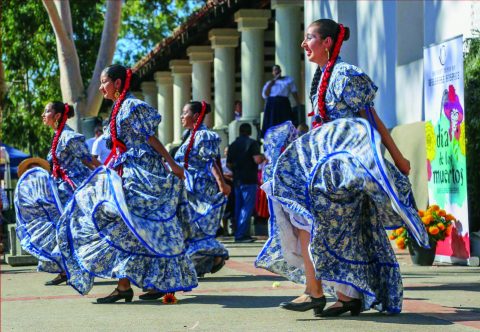
“It was one of my proudest moments,” Estrada said. “Having a very diverse community, being able to incorporate that in our book and for that book to be an awarded book, that felt amazing to me because the whole school was being represented and we got recognized for that.”
Long-Term Benefits of Multicultural Coverage in Yearbooks
It’s easy to get caught up in the immediate implications of multicultural coverage in yearbooks, but according to Taylor Blatchford, the impact is far reaching. As a news reporter at the Seattle Times, Blatchford focuses on audience engagement strategies, but she also writes a weekly newsletter called The Lead to better equip student journalists for the world of journalism.
Blatchford said creating a multicultural publication provides unique experience that can translate into future job skills needed in the journalism industry, especially as newsrooms become increasingly aware and focused on diversity and full representation of their communities.
“Student publications in general are a microcosm of professional journalism in that they should also be representative of their communities,” Blatchford said. “They should be actively part of the community and have people who can speak to the different experiences … You can’t fully cover a community or a city if you don’t have people on staff who represent those lived experiences.”
Blatchford brought up the importance of talking to that community about your decision to cover them – the decision to use another language cannot be made on your own. El Dorado High School, Santa Maria High School and Lexington High School all understood this. Each had bilingual staff who helped contribute to the authenticity of the coverage.
“[Have] that community’s members present in these discussions,” Blatchford said. “Talk to them and see is it something they think would be helpful or what they would like it to look like. You’re trying to reach and represent a certain group of people – you don’t want to do that without their input.”
If you decide it’s not right for your school, the time is not wasted. There’s value in talking through it.
“If students want to continue in journalism, those types of issues of diversity of coverage and representative coverage will continue to come up throughout their career,” Blatchford said.
The Logistics
So what does it take to create multicultural coverage in yearbooks?
“We really had good conversations on how we wanted to do almost a dual language book,” Brockmoller said. “Did we want everything to be translated? Did we just want a little part? Design wise, how is that going to look? Is it going to look cluttered?”
The translations commonly brought up one question: to Google or not to Google? While you should never count on Google as your sole source of translation, it can be a good backup reference. Santa Maria seldom used it because their school had a professional translator and they wanted a unified, cohesive voice. El Dorado used a native Spanish speaker who primarily speaks Spanish, then a bilingual student and finally verified with Google Translate after the first two steps were completed.
“If you’re going to write anything in Spanish, you have to have a native Spanish speaker,” Blatchford said. “Even if you don’t have one on your staff, you should definitely have one as a consultant or someone you trust to read through your copy. You can’t just use Google Translate.”
A session at NSPA on integrating marginalized groups into all parts of the book influenced how El Dorado approached incorporating Spanish coverage. Coverage in previous years of their diverse population opened her eyes to the significance of journalism, recalling how one story united a mom with her daughter after reading her profile feature.
“That was the first time that I was like, OK, wow! In professional journalism, a story can change somebody’s life. That was the first time I experienced that our stories, on the student level, can do the same thing. I think that made us even more bold to go after more coverage and more stories.”
What’s the Lesson in Multicultural Coverage in Yearbooks?
Martinez knew it would require additional work, but the message to her students made it worth it.
“I think when they see something that’s in Spanish in their yearbook, it’s like, ‘Wow! That speaks to me, not just literally, but it tells me that my language is valuable, that I’m valuable, that my culture is not second-class,’” Martinez said. “This is giving credibility, because nothing is more credible than seeing something in print.”
Is it worth all the extra effort required on top of a job that already requires so much hard work?
“Heck, yeah!” Estrada said. “We’re more willing to challenge ourselves. This year, we decided to go bolder.”
“It was worth it because people now understand the school,” Ballesteros Cendejas said. “They know that they’re not being left out. We’re including everyone.”
“Oh my gosh, yes, 100%!” Martinez said. “I’m so, so proud of all the coverage we have in this book! I’m proud of the book as a whole, but I’m really proud of our coverage.”
Brockmoller had one piece of advice: “Get extra copies because everyone is going to want to buy it.”
Tag:Latino Marketing

